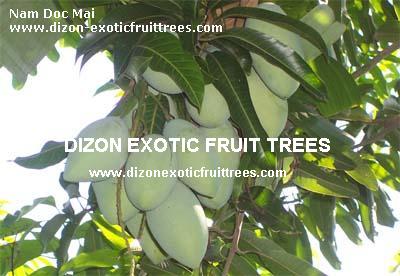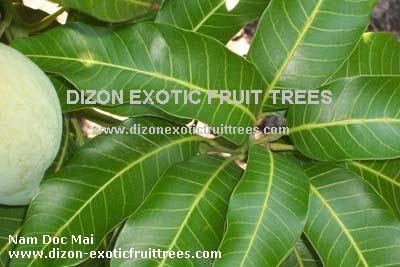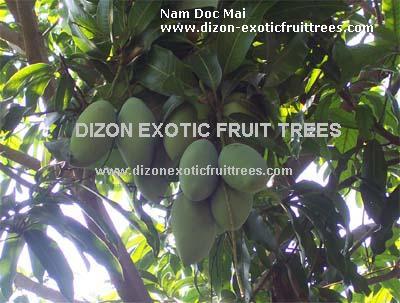|
|
NAM DOC MAI |
This is the
favorite fruit of the King of Thailand. Its fruit also
weighs around 1/2 to one kilo each. It bears fruits also
even during rainy season with less input and overcrowded
condition.
|
|
|
|
|
|
|
|
Agriculture Magazine, June 2002 |
|
Some Observations on
the Performance of Nam Dok Mai Mango
|
|
by Dr. Pablito P. Pamplona |
 |
Thailand grows more than 500,00 hectares
of mangoes which is three times when
compared this crop in the Philippines.
While the Philippines grows largely two
varieties namely Pico and (Carabao)
Manila super mango. Thailand grows many
varieties. These include Nam Dok Mai (NDM),
Chokanan, Nico, Savoey, Okrong, Nang
Mangwan, Thong Dam, Falan. |
|
| Thais prefer these
varieties over the Carabao mango which is also
available in that country for many reasons.
These include being responsive to high density
planting, short maturity period, easily induced
to flower. Etc. The most commonly grown
varieties are planted at close distances of 2 x
5 m, 3 x 6 m, or 4 x 6 m or for a population of
over 500 plants /ha. |
|
Some years back, Dr. Simon V. Valmayor,
after his return from Thailand, gave the
author a plant of NDM which was
multiplied and planted side by side with
Chokanan, and Carabao mango at Grace
Fruit Orchards in Kabacan, Cotabato.
Here are some observations which may be
useful to mango growers. These
observations compare the features of the
NDM to that of carabao mango. |
 |
|
1. Short immaturity
period. The
trees of NDM bear commercial quantity of fruits
as early as two years from planting unlike the
carabao mango which bears fruits in 4-5 years
after planting. A two-year old tree that is less
than 10 ft. tall produces 40-60 fruits of
300-400g each per cropping. A 4-5 year old tree
bears 200-300 fruits. NDM also bears fruits
every year, sometimes twice a year. This differs
from carabao mango which exhibits bienniality of
bearing fruit.
2. Responsive to
potassium nitrate.
NDM with mature to semi-mature leaves readily
produces long panicle of flowers when sprayed
with potassium nitrate. This differs from the
carabao mango which becomes responsive to this
flower inducer only when the leaves are fully
mature. We found that it is easier to induce NDM
to flower than the carabao mango with potassium
nitrate.
3. Less affected by
anthracnose.
The tree produces fruits even during rainy days
when the carabao mango fails to fruit due to the
damage of anthracnose. In situations of lower
amount of rainfall, two fungicide sprays were
found to produce clearskin NDM fruits unlike the
carabao mango which requires five or more
sprayings. NDM can be produced at a much lower
cost than the carabao mango as it requires less
fungicides.
4. Produces bigger
and longer fruits.
Mature fruits of NDM
are generally longer and bigger at 350 - 480 g
per fruit compared to carabao mango of 250-400 g
per fruit. |
| 5. Responsive
to pruning.
Severely
pruned NDM trees readily produce many
vegetative shoots which at 4-6 months
after pruning are already responsive to
flower inducer. Hence, it can be planted
at high density as the size of the tree
can be maintained small and low by
regular and judicious pruning. This
differs from the carabao mango wherein
severe pruning would reverse the tree to
vegetative stage and would not flower
for at least 2 years |
 |
|
| 6. Green Fruits are
highly acceptable.
The immature fruits of NDM of about a month
prior to ripen. |
|
|
|

